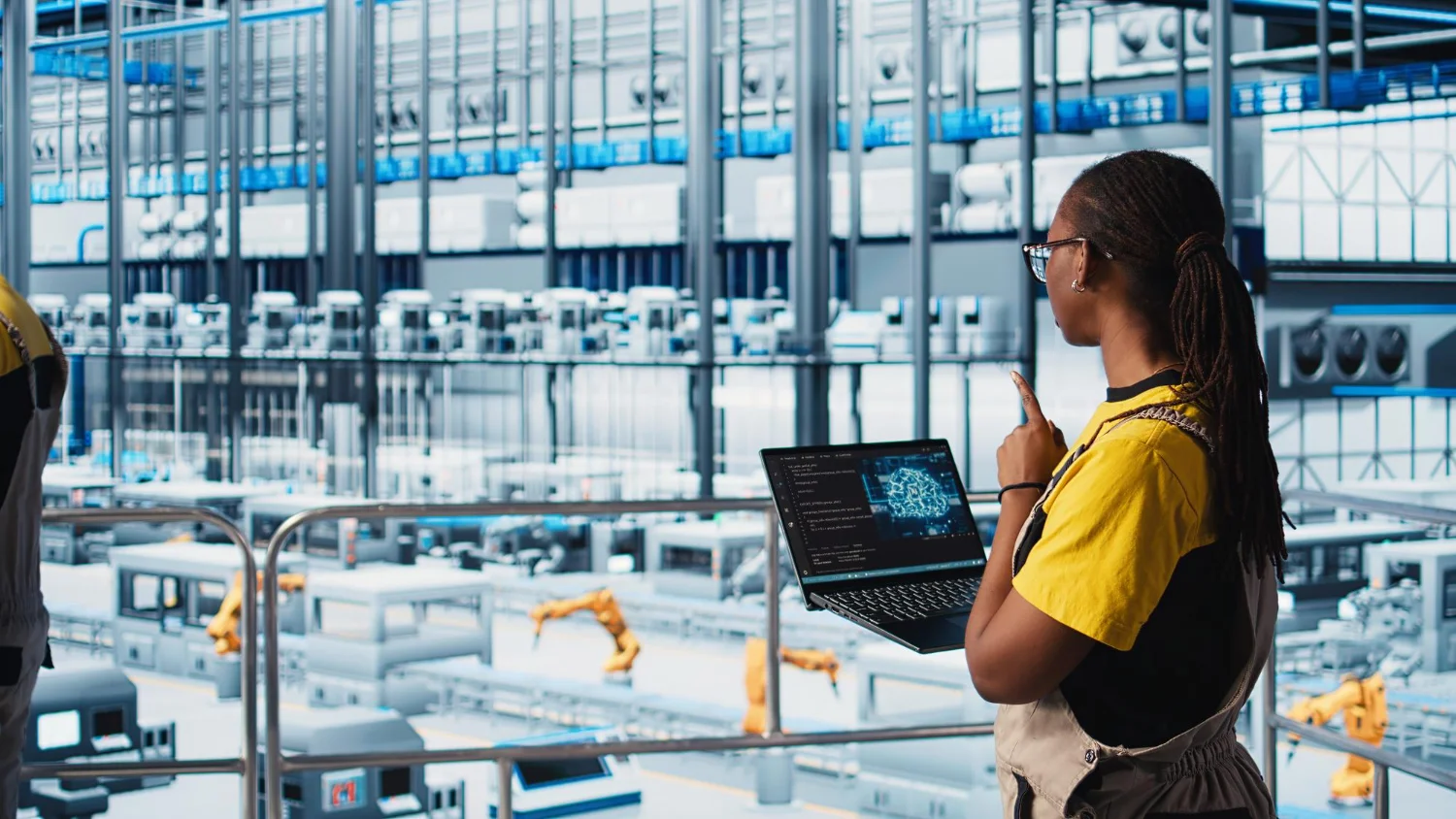How Virtual Try-On Reduces Returns in E-Commerce Stores

In the rapidly evolving world of e-commerce, fashion retailers face a significant challenge: high return rates. A 2023 Narvar study revealed that 70% of clothing returns result from size or fit issues. Virtual try-on technology, powered by artificial intelligence (AI) and augmented reality (AR), offers a transformative solution to this problem. By allowing customers to digitally try on clothes before purchasing, retailers can enhance customer satisfaction, reduce return rates, and improve overall business performance.
What Is Virtual Try-On Technology?
Virtual try-on technology enables customers to digitally try on clothing items using AR and AI. By uploading a photo or using a webcam, shoppers can see how garments will look on their virtual selves, considering factors like fit, color, and style. This immersive experience bridges the gap between online and in-store shopping, providing a realistic preview of products.
Why Do Customers Return Clothes in Online Shopping?
Customers return fashion items online primarily due to:
- Size and Fit Issues: Garments that don’t fit as expected.
- Inaccurate Product Representation: Fabric or color appears different from product photos.
- Multiple Size Orders: Shoppers order multiple sizes and return the extras.
- Model Representation: Models do not represent diverse body types.
A 2023 Narvar study found that 70% of clothing returns result from size or fit issues.
How Virtual Try-On Reduces Returns
Virtual try-on technology helps customers make better purchasing decisions by:
- Accurate Size Prediction: AI clothing try-on predicts size more accurately than traditional charts.
- Realistic Previews: Virtual previews show textures, draping, and proportions clearly.
- Increased Confidence: Shoppers see how clothes look before ordering, boosting confidence.
Benefits for E-Commerce Retailers
1. Reduced Logistics Costs
Virtual try-on technology significantly decreases return rates by providing customers with a more accurate representation of how products will fit and look. This reduction in returns leads to lower shipping and handling expenses, as products are less likely to be sent back. Additionally, fewer returns mean less strain on inventory management and fulfillment processes, contributing to overall cost savings.
2. Stronger Customer Loyalty
By offering an immersive and personalized shopping experience, virtual try-on tools enhance customer satisfaction. When customers feel confident in their purchase decisions, they are more likely to return for future purchases. This increased satisfaction fosters brand loyalty, as consumers appreciate the convenience and reliability of the shopping experience.
3. Increased Conversion Rates
The interactive nature of virtual try-on technology engages customers more deeply, encouraging them to explore a wider range of products. This engagement leads to higher conversion rates, as customers are more likely to complete purchases when they can visualize how items will look on them. Studies have shown that brands implementing virtual try-on solutions have experienced up to a 30% increase in sales.
4. Improved Sustainability
Reducing return rates not only cuts costs but also contributes to environmental sustainability. Fewer returns mean less transportation and packaging waste, aligning with growing consumer demand for environmentally responsible business practices. By adopting virtual try-on technology, retailers can support sustainability efforts while enhancing their brand image.
AI Innovations in Virtual Try-On
1. AI Dress Generator
AI-powered dress generators create personalized clothing designs based on user preferences and body measurements. These tools allow customers to visualize custom outfits before purchasing, enhancing the shopping experience and reducing the likelihood of returns due to style mismatches.
2. AI Clothing Swap and Model Swap
AI clothing and model swap technologies enable users to see how different outfits will look on various body types. This capability provides a more inclusive shopping experience, allowing customers to visualize how garments will fit and look on them, regardless of their body shape.
3. AI Product Photography
AI-driven product photography tools generate high-quality images of clothing items without the need for physical photo shoots. These tools create realistic representations of garments, helping customers make informed purchasing decisions and reducing the chances of returns due to inaccurate product images.
4. AI Fashion Design Platforms
AI fashion design platforms assist designers in creating unique styles at scale. By analyzing trends and consumer preferences, these platforms generate design suggestions that align with market demands, streamlining the design process and enhancing product offerings.
Explore how these innovations work in more detail with SellerPic’s Virtual Try-On Accessories Tool.
The Future of AI Virtual Try-On in Fashion
1. Real-Time Clothing Model Generation
Future advancements in AI will enable real-time generation of clothing models, allowing customers to see how garments will look on them instantly. This development will further enhance the shopping experience by providing immediate and accurate visualizations of products.
2. AR Mirrors in Physical Stores
Integration of augmented reality (AR) mirrors in physical retail stores will allow customers to virtually try on clothing items without the need for physical garments. This technology bridges the gap between online and in-store shopping experiences, offering convenience and enhancing customer satisfaction.
3. Metaverse Fashion Integration
The rise of the metaverse presents new opportunities for virtual try-on technology. Brands are exploring the integration of virtual fashion items within metaverse platforms, allowing users to try on and purchase digital clothing for their avatars. This expansion into virtual worlds opens new revenue streams and engages a tech-savvy consumer base.
Conclusion
Virtual try-on technology is revolutionizing the e-commerce fashion industry by providing customers with a more interactive and personalized shopping experience. By leveraging artificial intelligence (AI) and augmented reality (AR), retailers can offer realistic clothing previews, enabling customers to make more informed purchasing decisions. This results in fewer returns, higher conversion rates, and stronger customer loyalty.
As AI innovations continue to evolve, we can expect virtual try-on tools to become even more sophisticated, offering real-time clothing model generation, integration with AR mirrors in physical stores, and even support for virtual fashion in the metaverse. These advancements not only enhance the shopping experience but also contribute to improved sustainability and efficiency for retailers.
Ultimately, virtual try-on technology is shaping the future of online shopping, providing a win-win scenario for both customers and e-commerce retailers. As the technology becomes more accessible and integrated, the industry will continue to benefit from increased customer satisfaction, reduced operational costs, and a more sustainable business model.
FAQs
1. What is virtual try-on technology?
Virtual try-on technology allows customers to digitally try on clothing items using augmented reality (AR) and artificial intelligence (AI). By uploading a photo or using a webcam, shoppers can see how garments will look on their virtual selves, considering factors like fit, color, and style. This immersive experience bridges the gap between online and in-store shopping, providing a realistic preview of products.
2. How does virtual try-on reduce return rates?
By offering accurate size predictions and realistic previews, virtual try-on technology helps customers make informed purchasing decisions. This leads to fewer size and style mismatches, thereby reducing return rates. Retailers using AI try-on report up to 30% fewer returns.
3. Which brands use virtual try-on technology?
Leading fashion retailers such as Zalando, Walmart (in partnership with seller pic), Amazon, and Snap have implemented virtual try-on tools to enhance the online shopping experience and reduce return rates.
4. Can small clothing brands use virtual try-on apps?
Yes, many SaaS providers offer affordable virtual try-on solutions that can integrate into platforms like Shopify, WooCommerce, or custom stores, making it accessible for small brands.
5. What are the benefits of virtual try-on for e-commerce retailers?
Virtual try-on technology offers several advantages for e-commerce retailers:
- Reduced Logistics Costs: Fewer returns lead to lower shipping and handling expenses.
- Stronger Customer Loyalty: Enhanced shopping experiences foster brand loyalty.
- Increased Conversion Rates: Up to a 20% increase in conversions.
- Improved Sustainability: Reduced return-related waste contributes to environmental sustainability.
6. What AI innovations are transforming virtual try-on technology?
New AI-driven tools are enhancing the virtual try-on experience:
- AI Dress Generator: Creates personalized clothing designs.
- AI Clothing Swap and Model Swap: Provides realistic outfit previews.
- AI Product Photography: Generates catalog images without physical shoots.
- AI Fashion Design Platforms: Develops unique styles at scale.
7. What is the future of AI virtual try-on in fashion?
The future of AI virtual try-on in fashion includes:
- Real-Time Clothing Model Generation: AI will create clothing models in real time.
- AR Mirrors in Physical Stores: Integration with in-store AR mirrors.
- Metaverse Fashion Integration: Support for virtual fashion in the metaverse.
These advancements aim to make e-commerce more sustainable, efficient, and customer-focused.
8. How can virtual try-on technology improve customer satisfaction?
By providing customers with a realistic preview of how clothing items will fit and look on their bodies, virtual try-on technology enhances the shopping experience. This leads to increased confidence in purchasing decisions, higher satisfaction, and a reduction in post-purchase regret.




